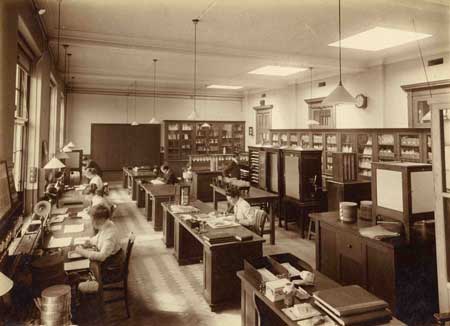1920–1929
In 1901 the first official seed testing and plant diseases laboratory in Britain and Ireland was established in the Royal College of Science for Ireland. The professor of botany at the college, Thomas Johnson, had since his appointment in 1890 been a strong advocate for the establishment of a seed testing station that would establish standards of purity, pedigree and germinating energy for agricultural seed. Johnson was appointed as the first director of the laboratory, assisted in the early years by a lecturer, George Pethybridge, and an analyst, Rebecca Hensman. In its first year 486 samples of seed were tested. As the station’s responsibilities expanded the number of staff increased, and the station transferred to new and better equipped accommodation in Merrion Street in 1911.
By 1918 Pethybridge was director, with two assistants, Henry Lafferty and Paul Murphy, and twenty-three staff who between them tested 12,487 samples. Pethybridge received the 1921 Boyle Medal, the highest scientific honour of the Royal Dublin Society, in recognition of his research into potato diseases. When Pethybridge resigned in 1922 with the change of government he was succeeded by Lafferty as head of seed testing. Murphy took over the plant disease division, and was appointed professor of plant pathology when this activity transferred to UCD in 1927. He received the Boyle Medal in 1933 for his research into plant viruses.
Over the years the role of the seed testing laboratory was to undergo fundamental change, especially when Ireland joined the EEC in 1973, but it maintained its links with the university and remained in Merrion Street until it transferred to Abbotstown in 1990.

